Montana’s Hardy Winter Birds
Not every bird is a snow bird that heads for warmer climes as winter descends on Montana. Of the 424 different bird species that occur in Montana, about 40%, or 177 species, overwinter in the state, including 13 birds of prey. Nine species are found in Montana only in winter: the Rough-legged Hawk, the Gyrfalcon, Snowy Owl, Northern Shrike, American Tree Sparrow, the Lapland Longspur, Snow bunting, and Common and Hoary Redpoll.
Birdwatching is yet another way for people to get out and enjoy winter’s magic. It can also contribute to bird conservation through citizen science data collection. Over 30 Montana communities participate in National Audubon’s Christmas annual bird counts that occur between mid-December and mid-January of each year. These field surveys have provided scientists with important information about winter bird habitat and have documented the fact that nearly all of Montana’s winter birds are wintering farther north in response to warming temperatures.
Winter bird watching is not limited to those who enjoy tromping through forest or field in snow shoes with binoculars in hand. Everyone can enjoy winter birds by simply installing and maintaining back yard bird feeders. Winter’s scarcity ensures that local birds will find feeders hung with thistle, seeds, or suet. Larger birds of prey often follow, looking for the smaller birds who frequent the feeders.
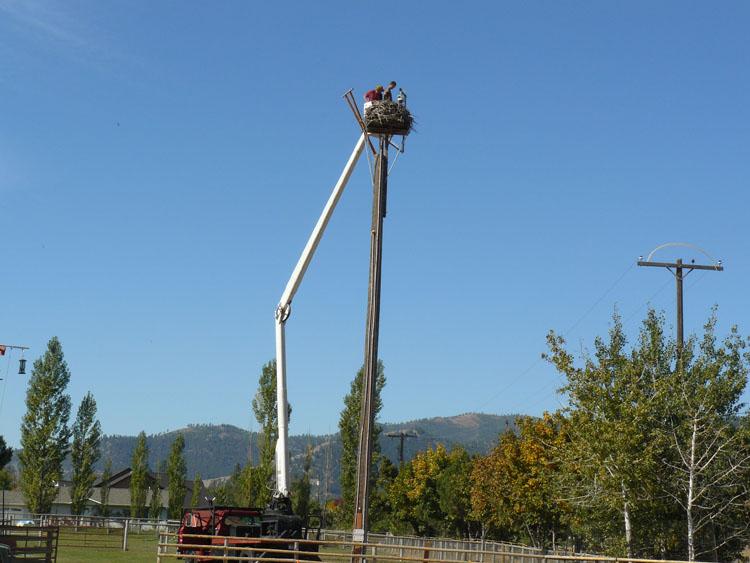
Dunrovin Ranch has taken winter birdwatching via bird feeders to new heights—literally. Dunrovin’s osprey nest is situated atop on a 47-foot pole. The nest not only supports the ospreys during their breeding season from late March through mid-September, it has evolved into something of an avian condominium. During the summer months, sparrows, and starlings use the catacombs created by the entwined branches of the huge nest for their own nests. It is a synergistic arrangement. The little birds help keep the nest clean underneath and disease free while the ospreys, who eat only fish, provide the small birds with protection by warding off other birds of prey.
Winter months, however, create a different situation. Four bird feeders with thistle, sunflower seeds, and suet hang from the ospreys’ nest perch to provide a secure food source that attracts a variety of birds. The congregation of the avian seed eaters then brings in the birds of prey. All this action is within view of Dunrovin Ranch’s webcam and can be heard through its ambient microphone. Webcam viewers know that a bird of prey has landed when the constant chirp of the gathered seed and suet eaters suddenly stops.
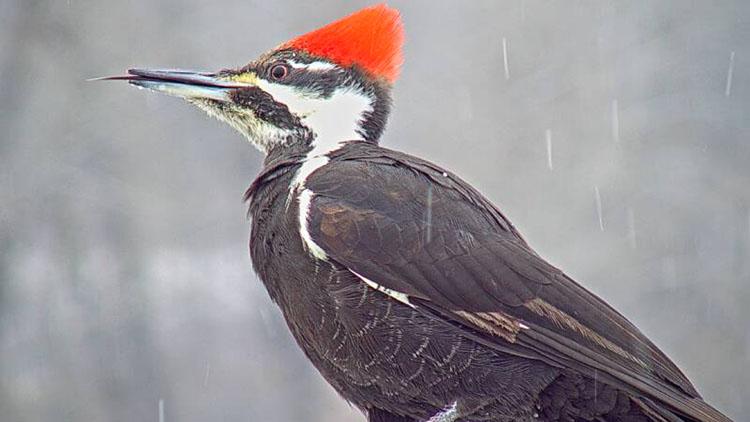
Hawks and falcons are a patient lot. Standing rigidly still for long periods of time, they scan the area with their keen and laser-focused eyes, waiting for an unsuspecting sparrow, finch, chickadee, or starling to make a wrong move. Often these vigils do not produce the desired results on the part of the predators. Other times, these standoffs end in a sudden burst of feathers and the screech of a small bird as the raptor scores its own meal.
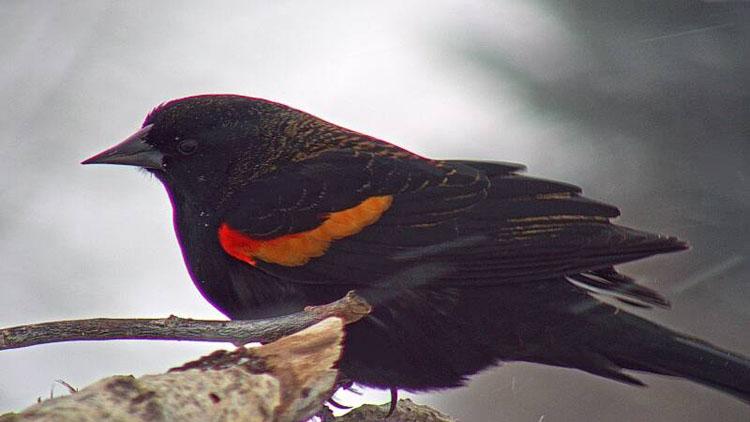
The close and intimate observations afforded by the web camera can make the ordinary seem extraordinary and foster a greater appreciation of the birds’ beauty, complexity, and struggles. Statuesque moments of raptors lying in wait for prey allow camera operators to caress the bird’s body from head to talons and marvel at the intricate color variations among its feathers. A close-up image of a raptor’s unflinching stare directly into the camera betters the dictionary definition of the phrase “hawk-eyed scrutiny.” Iridescent purple and green feathers appear on the collars of common rock pigeons when captured in direct sunlight; and their large eyes seem afire as the yellow around their large black pupils turns to orange and red.

The red-topped pileated woodpecker is always a welcome arrival at the suet feeders. They often come in mating pairs. Red cheek feathers on the male make them easy to distinguish from the female partners; they often announce their coming with loud distinguishing calls as they fly in. Another handsome suet feeder, the American flicker flashes its bright orange under-feathers as it flits about. With a black bib and black spots on its chest, bright red cheek patches, and hints of orange on its wings and tail feathers, the flicker cuts a very striking figure.
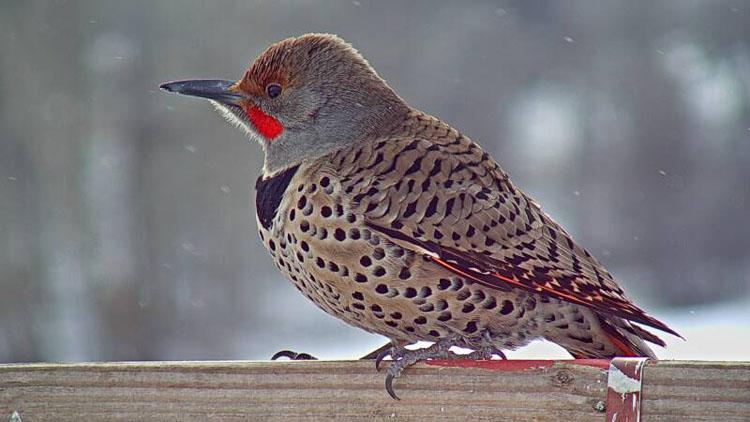
Occasionally a bird does something truly mysterious within webcam view that requires some investigation to understand. Such was the case with a late autumn visit to the nest from an American kestrel. The smallest bird of prey in North America, kestrels are also one of the most beautiful of all raptors. The males’ feathers are “paint by number” blocks of steel blue, light burnt umber, and black and white, with distinct black spots on their backs and chests. Kestrels eat mostly insects and small mammals and birds, such as moles, mice, shrews, bats, and songbirds. They do not eat vegetation. Yet, that is exactly what a kestrel did for several minutes. He packed around the nest, found small bits of the bark form cotton wood limbs that the ospreys had brought to the nest, and ate them.
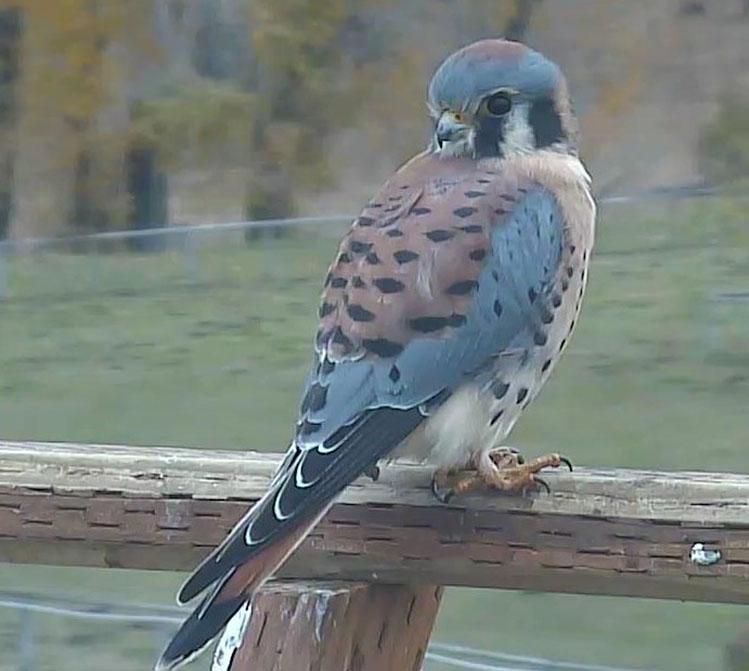
Before this incident, Dunrovin had hosted a workshop focused on “zoopharmacognosy,” which is a big word that can be broken into its component parts: “zoo” meaning animals, “pharma” meaning pharmacology, and “cognosy” meaning knowledge. In other words, animals that know about the pharmaceutical properties of plants within their habitats. After watching the kestrel eat the cottonwood bark, Dunrovin contacted an expert in zoopharmacognosy to learn that cottonwoods are part of the poplar family of trees that contain varying amounts of salicin, the chemical component most commonly found in aspirin. In Edible and Medicinal Plants of the West, by Gregory L. Tilford he states, “All poplars contain varying amounts of salicin, and preparations of the leaves or inner bark (cambium) can be used to relieve pain, inflammation, and fever.” The male kestrel might well have been self-medicating for pain. You can see a video of this incident by going to www.members.daysatdunrovin.com/cottonwoods-magical-trees/.
At times the excitement at the bird feeders come not from individual birds, but from the sheer number of one type of bird. Late winters see the red-winged blackbirds return to Montana in great numbers. Mobbing the bird feeders and creating a noisy cacophony with their distinct trills, these birds are one of the first harbingers of spring. While some overwinter, Montanans know that seeing them numbers means that winter is loosening its grip on the land.
Please join us a www.DaysAtDunrovin.com to enjoy winter bird watching made easy by our bird feeders and web camera.
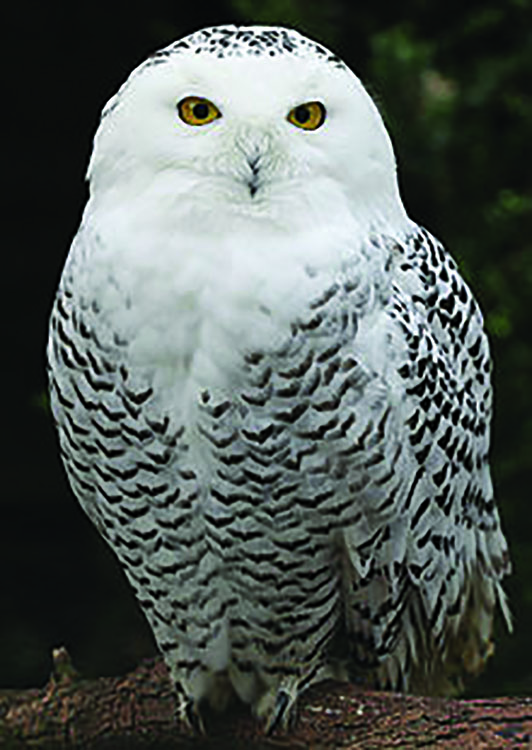
Please join us a to enjoy winter bird watching made easy by our bird feeders and web camera.Join ornithologist world famous for his work on snowy owls, Denver Holt, on one of his Winter Raptor Workshops in Montana’s Mission Valley which has some of the highest densities of wintering raptors in the Northwest.
CLICK HERE for more information.

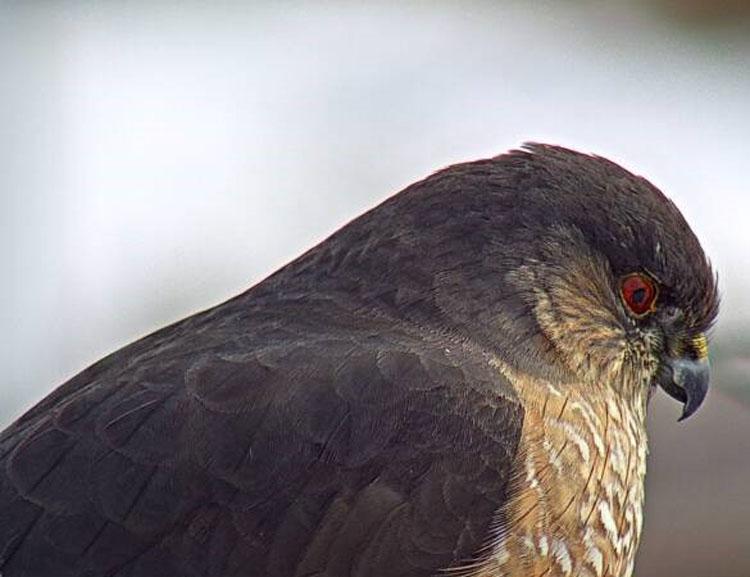


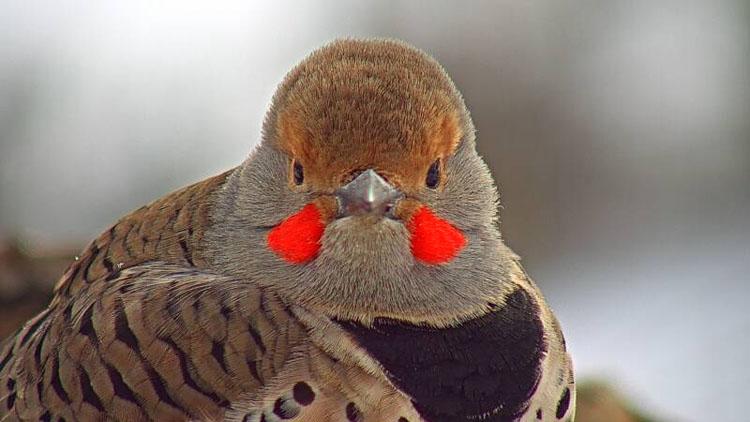

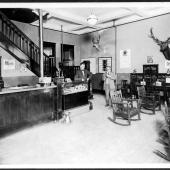









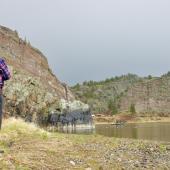
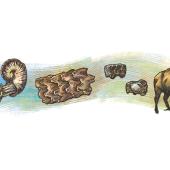
- Reply
Permalink